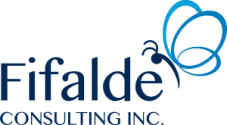An accredited management systems certification should provide confidence in the organization’s ability to meet its objectives related to the intent of a management system standard. One way for an organization to formalize how well they have defined their objectives, in line with stakeholder needs, and how well they meet these objectives, is to define and implement a management system and get it certified by a third party.
To achieve an organization’s objectives related to the expected outcomes intended by the chosen and applicable management systems standard, the accredited management system certification is expected to provide confidence that the organization’s management system conforms to the applicable requirements of the specific ISO standard they decided to adopt. In particular, it is to be expected that the organization conform to those 12 checkpoints list.

The overall process is not as complicated as it may seem. We can help your organization in meeting these outcomes. We can support you at multiple levels, providing awareness training on the specific ISO management system standard you need, or providing formal certified training to key employees involved in such projects, either as implementers or auditors. We can also help all along the path to certification, from the start of the definition of the scope, through the definition of all artefacts required by the standard, and to the final implementation of all these artefacts. This can ensure a certification is granted at the first attempt.
Being an ISO Certified Organization
– What does it means?
- has an appropriate management system for its organizational context and certification scope;
- has defined a policy suitable for the intent of the specific management system standard;
- is addressing any risks and opportunities associated with its context and objectives;
- analyses and understands customer needs and expectations, as well as the relevant statutory and regulatory requirements related to its products, processes and services;
- ensures that product, process and service features are specified in order to meet all applicable requirements;
- has determined and is managing the processes needed to achieve the expected outcomes intended by the management system standard;
- has ensured the availability of resources necessary to support the operation and monitoring of these products, processes and services;
- monitors and controls the defined product process and service features;
- aims to prevent nonconformities, and has improvement processes in place;
- has implemented effective internal audit and management review processes;
- is monitoring, measuring, analyzing, evaluating and improving the effectiveness of its management system;
- has implemented processes for communicating internally, as well as responding to and communicating with interested external parties

